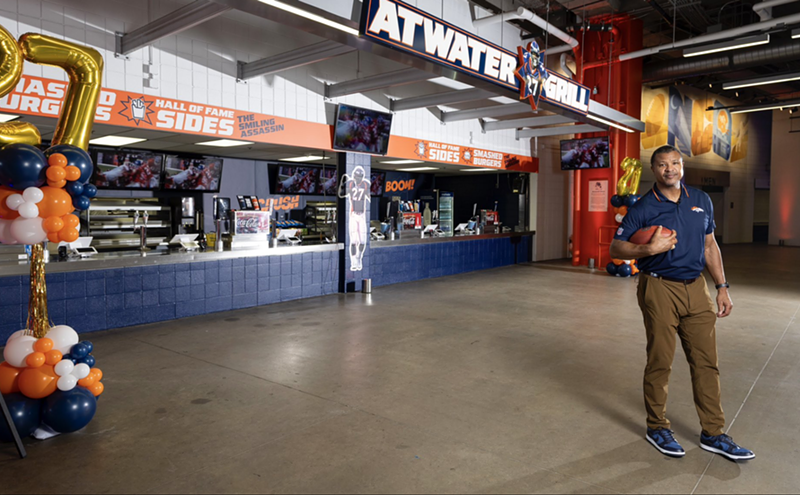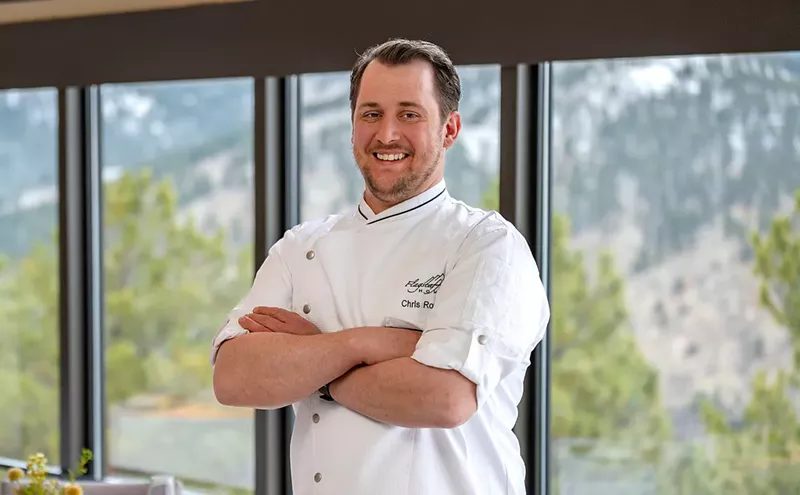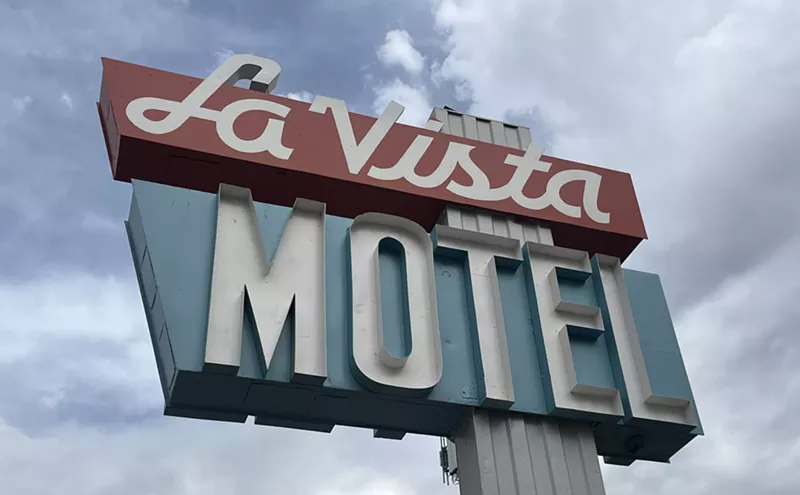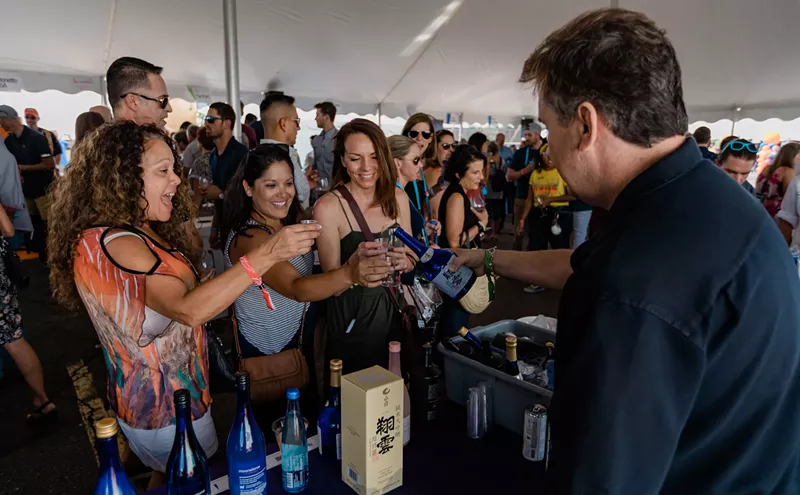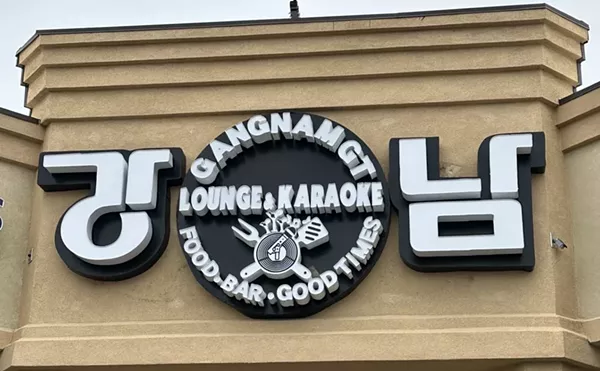Lenka Juchelkova wasn’t trying to open a bar — she was just looking for a dishwasher. She heard that a dishwashing machine was available at 1543 Champa St., and stopped by to take a look. A wine events space occupied that address and it was going out of business. Juchelkova, who owns Arvada Tavern with her husband Mike Huggins, immediately saw potential in the small, but charming space. It would make a great cocktail, bar, she thought.
When she returned with Huggins, he also became intrigued by possibilities, and agreed that a cocktail bar would fit perfectly. “One of the biggest things that fascinated me,” Huggins says, “was that I saw this as an opportunity to take cocktails back to when they originated, in the 1800s, before Prohibition.” The bar they both opened came to be called Union Lodge No. 1, which just opened in May.
The room had plenty of antique charm: high ceilings, exposed brick and a large foyer with tall wooden doors that opened out to the street. After opening The Arvada Tavern in October 2012, the pair showed a passion for faithfully restoring old spaces and making them new again. They brought the Tavern to life in an Art Deco style that showed a reverence for the history of the building. They signed a lease on the new space and set about, once again, delving into the building’s historical record, to resurrect it as it was over a hundred years ago.
“The first thing I always do is focus on the building,” Huggins says, “and what historically could have happened in the building that would play into its role.” Having instituted a cocktail program at Arvada Tavern that emphasized post-Prohibition era cocktails, Huggins and Juchelkova decided to to dig even further into history — before Prohibition — and into the twilight time of the dawn of the cocktail itself. Since the building was erected in 1889, they reasoned, why not create a cocktail program that would be true that era?
“There were punches and other types of mixed drinks throughout history,” Huggins says, adding that it was in America that cocktails were first made individually, in front of a customer. “That was created right here in the United States,” he continues. “So, this bar is a tribute to that concept and an effort to bring that concept back.”
They even brought the name back. Above the front door, words etched in the building’s stone exterior identify the building as Oddfellows Hall; 1543 Champa St. was Lodge No. 1 of that fraternal organization, popular at the time of the building’s construction.
So, what did people drink in 1889? “All of our recipes are based on recipes from the 1800s,” Huggins says. While products have improved over the years, along with improvements such as refrigeration, he created a cocktail program that aims to be as true to the original recipes as possible. “We try to replicate a similar version, a few tweaks here and there,” he adds.
On May 1, Union Lodge opened with a cocktail list that includes 18 classics, with familiar names such as the Sazerac, Vieux Carre, Knickerbocker and Sherry Cobbler. In keeping with that era, there are no Coke or Pepsi products, or anything of the kind. Ice is chipped by hand. Cocktails, served in vintage glassware, are all made by hand, while you watch. If you’re lucky, you can watch the Blue Blazer being made, which involves a very dramatic pyrotechnical display of flaming liquid poured back and forth between two metal mugs.
“What makes this unique is that we are very disciplined about the products that we choose to put on the shelf,” Huggins says. “Everything should, roughly, have a story that predates Prohibition. It’s supposed to represent something that would have been found on a shelf pre-Prohibition. Which is very tough, because a lot of those products have changed.”
There is no selection of tequilas, or vodkas; those spirits weren’t even around in Victorian-age America. Beverage inventory is kept to a minimum, with an emphasis on high-proof whiskies, so that guests are compelled to look at a drink menu. “We want the customer to really explore a cocktail,” Huggins says, “not just go to their ‘default’ because they are timid about the cocktails.”
There is no happy hour at Union Lodge, another conscious decision that keeps the concept true to its origins. “We’re not looking for someone who’s looking for a party,” Huggins says. “We’re looking for someone who is looking for an experience.”
There is no food, partly due to the size of the space. But the omission was due more to highlight the main concept behind Union Lodge: to put the cocktail front and center, and put the barman at center stage.
Huggins and Juchelkova spent time in some of the most revered classic cocktail bars in the world, for inspiration: The Savoy in London, Harry’s Bar in Paris, Blue Mouse and Bonvivant’s in Prague. They also admired the work of local cocktail bars such as Williams & Graham, Green Russell and Ste. Ellie. But they knew that, ultimately, Union Lodge would be completely American, and would be a celebration of the emergence of that very American phenomenon: the cocktail.
“There are a lot of restaurants that have awesome cocktail programs,” Huggins says. “But there’s something unique about a true cocktail bar, versus a restaurant that has an amazing cocktail program. There’s something that just makes it feel a little bit more intimate, a little bit more unique.”
Union Lodge is not large — there are 14 seats at the bar, and 20 more scattered throughout the space, including four cocktail tables and a long, black leather banquette that spans the south and east walls. A tin ceiling was added, much like at the Arvada Tavern, painted a few times to give the impression of age. A reclaimed oak-plank floor was installed, as well as tall white curtains, an eleven-foot liquor cage, and fixtures sourced from local antique stores.
But there’s one piece of the Union Lodge’s design that emblematically plants the restaurant in that late-1800s era: a tattered 38-star American flag hanging on the wall behind the bar. “It was made somewhere between 1887 and 1889,” Huggins says. “It would have been the flag that would have hung on this building when the building was built, so that’s why we have that there.”
A previous version of the flag contained only 37 stars. As states were added to a growing America, new flags were made with the correct number of stars, representing all the states. In 1876, one more state was added, bumping the number up to 38. That state was Colorado. And in much the same way that Colorado joined a family of states, Union Lodge No. 1 joins a growing family of cocktail bars in Denver and America, where the cocktail itself was born.

Audio By Carbonatix
[
{
"name": "GPT - Billboard - Slot Inline - Content - Labeled - No Desktop",
"component": "23668565",
"insertPoint": "2",
"requiredCountToDisplay": "2"
},{
"name": "STN Player - Float - Mobile Only ",
"component": "23853568",
"insertPoint": "2",
"requiredCountToDisplay": "2"
},{
"name": "Editor Picks",
"component": "17242653",
"insertPoint": "4",
"requiredCountToDisplay": "1"
},{
"name": "Inline Links",
"component": "18838239",
"insertPoint": "8th",
"startingPoint": 8,
"requiredCountToDisplay": "7",
"maxInsertions": 25
},{
"name": "GPT - 2x Rectangles Desktop, Tower on Mobile - Labeled",
"component": "24956856",
"insertPoint": "8th",
"startingPoint": 8,
"requiredCountToDisplay": "7",
"maxInsertions": 25
},{
"name": "Inline Links",
"component": "18838239",
"insertPoint": "8th",
"startingPoint": 12,
"requiredCountToDisplay": "11",
"maxInsertions": 25
},{
"name": "GPT - Leaderboard to Tower - Slot Auto-select - Labeled",
"component": "17676724",
"insertPoint": "8th",
"startingPoint": 12,
"requiredCountToDisplay": "11",
"maxInsertions": 25
}
]


